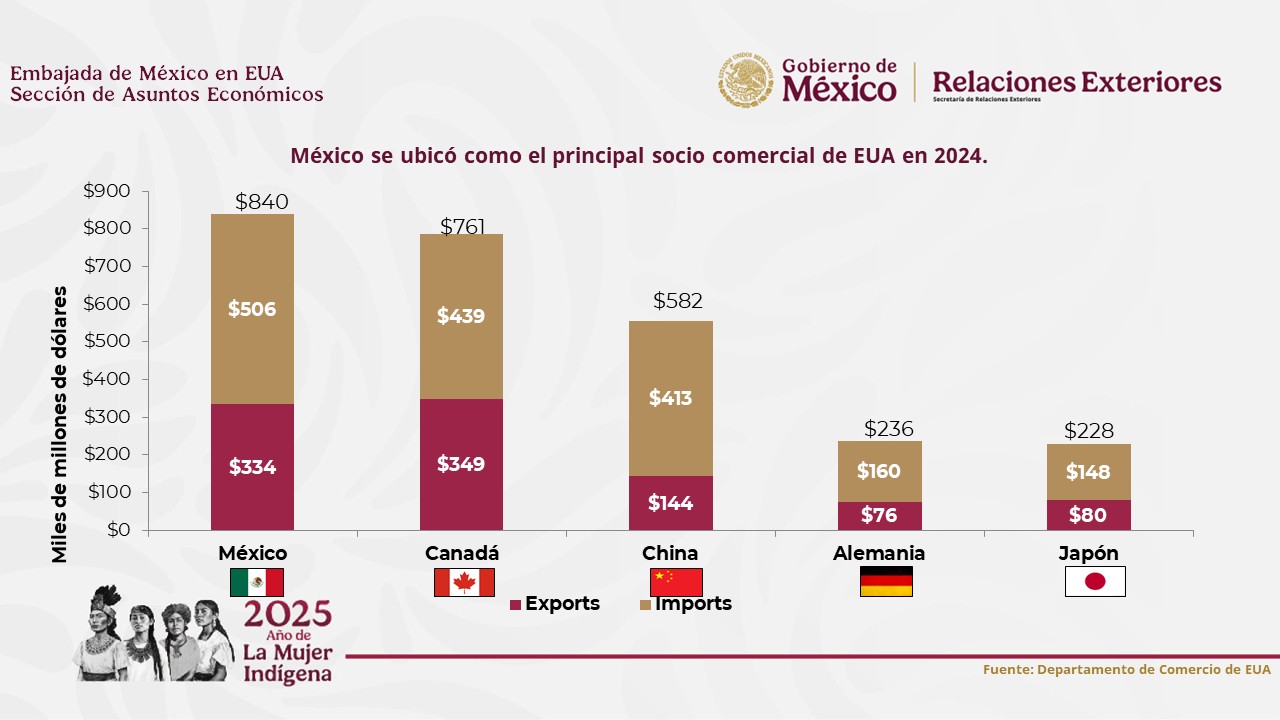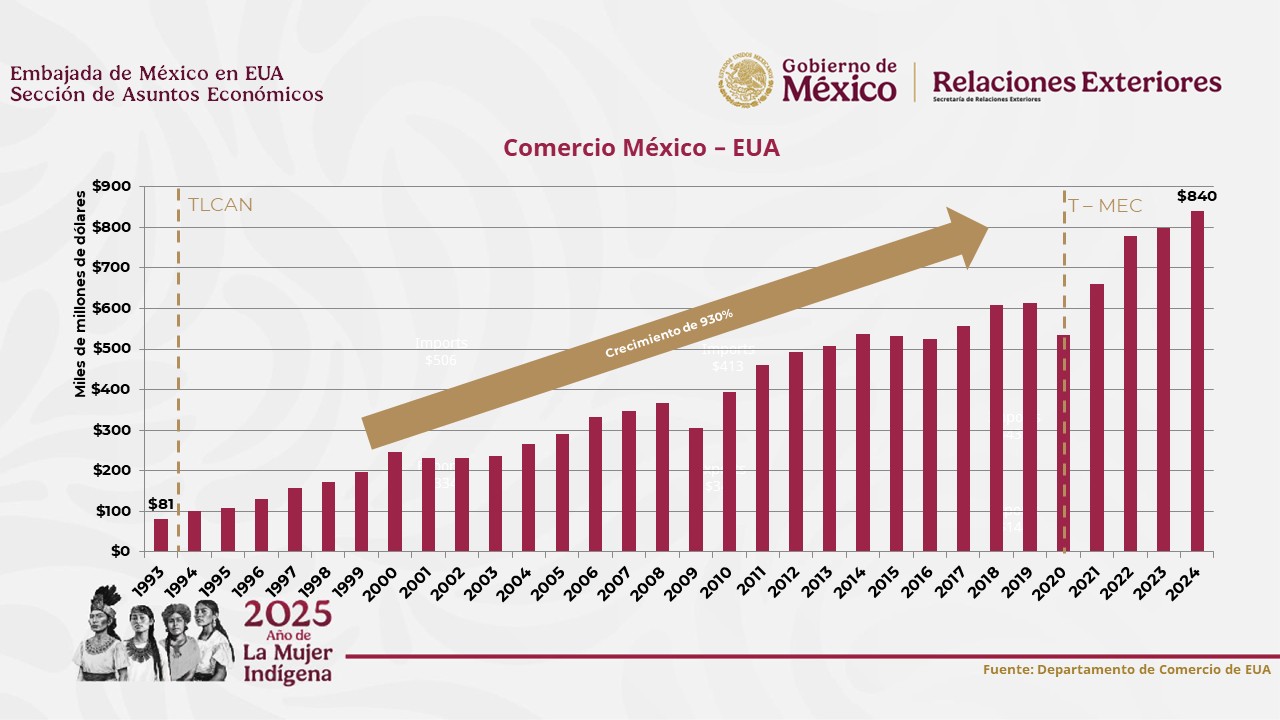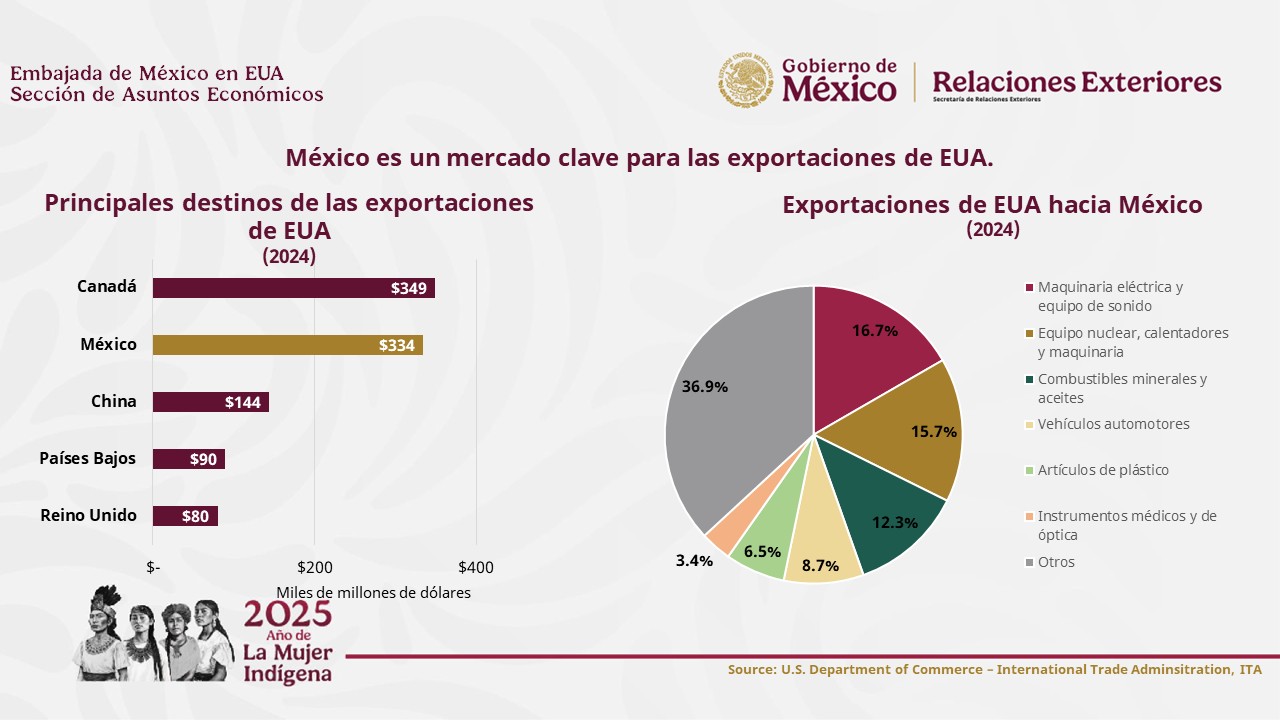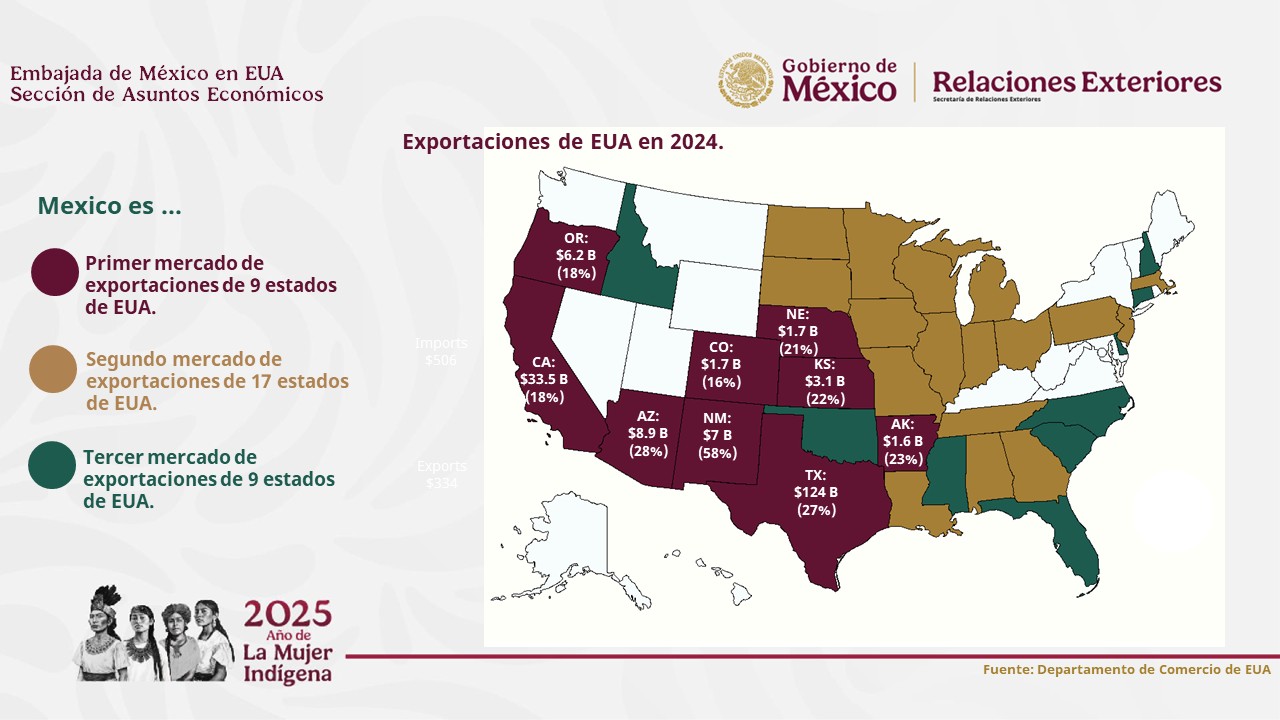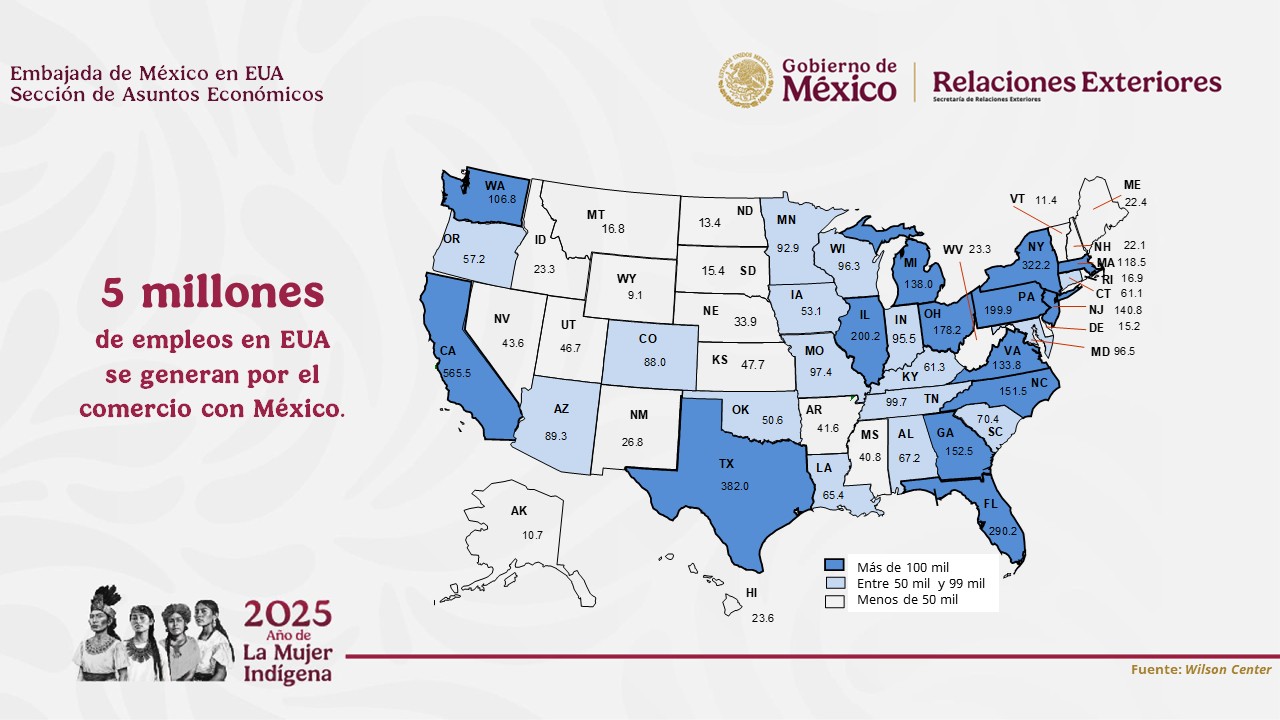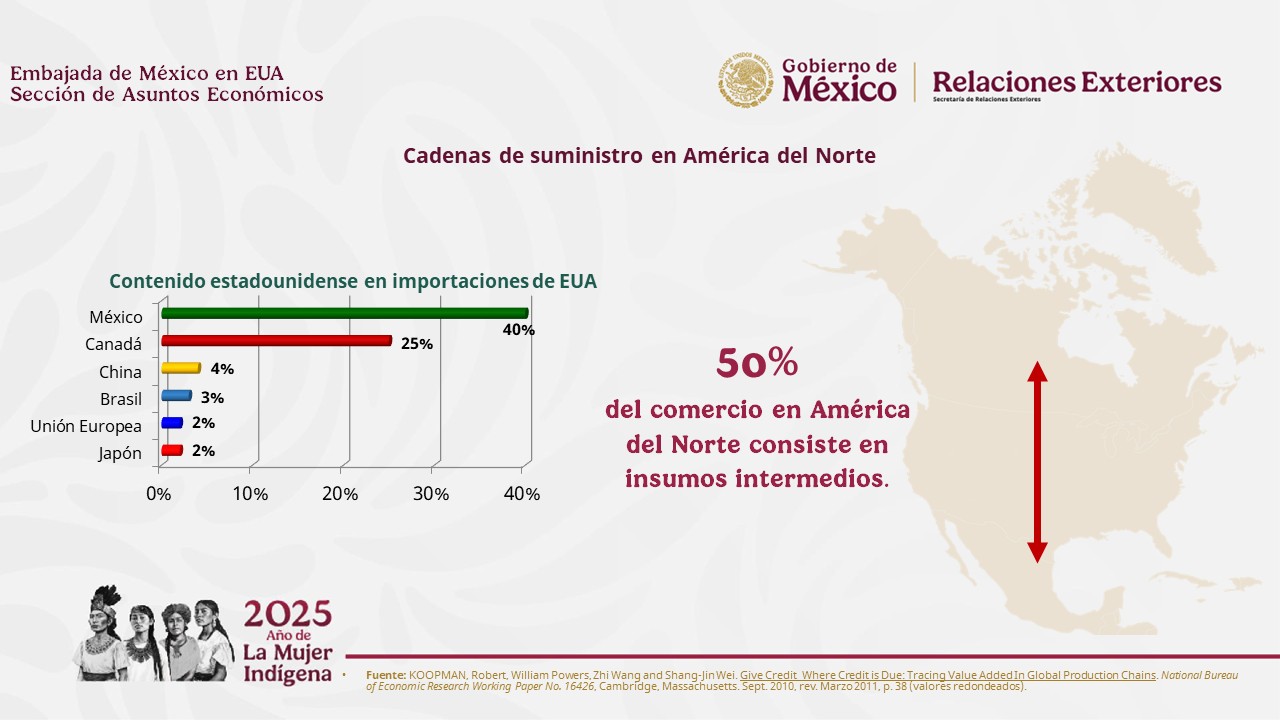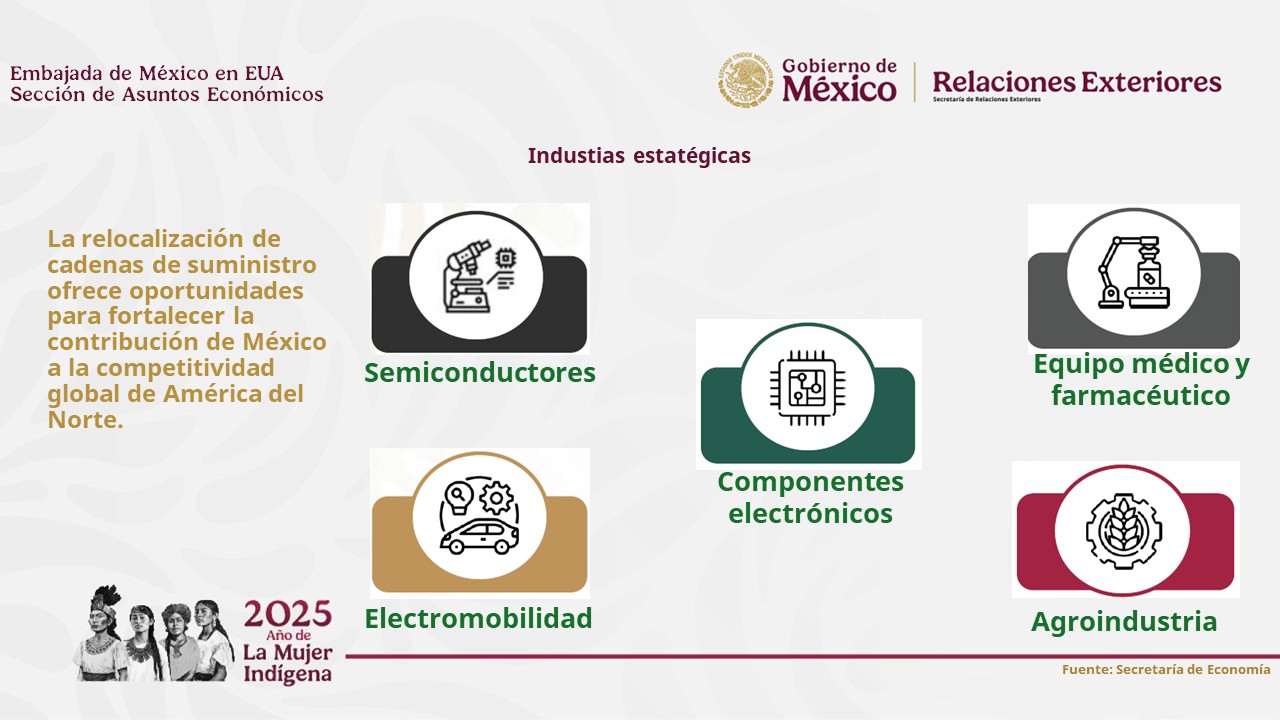Servicios a Personas Mexicanas
Instituto Cultural Mexicano
Instituto Cultural Mexicano
El Instituto Cultural Mexicano se encuentra ubicado en:
2829 16th St NW, Washington, DC 20009
Economía
Oficina de Asuntos Económicos
|
|||||
|
Do you want to learn more? Check out this presentation Learn more about US - Mexico trade by states with these factsheets Section of Economic Affairs
|
Cooperación y Educación
Oficina de Cooperación y Educación
La Sección de Cooperación y Educación de Embamex EUA promueve el fortalecimiento de las relaciones bilaterales en materia educativa, académica y técnica-científica, mediante las siguientes actividades:
- Difusión de becas, estancias y programas de intercambio académico ofrecidos por instituciones estadounidenses a ciudadanos mexicanos.
- Promoción de la Convocatoria de Becas del Gobierno Mexicano para Extranjeros.
- Apoyo en la organización de actividades académicas como seminarios, conferencias y congresos.
- Relación con las asociaciones de estudiantes mexicanos en Estados Unidos.
- Relación con centros de investigación, fundaciones y organizaciones no gubernamentales a fin de impulsar el desarrollo de proyectos en México en colaboración con contrapartes mexicanas.
- Punto de contacto con instituciones gubernamentales estadounidenses, sector privado y Embajadas en temas de cooperación e innovación espacial y satelital.
Educación, Ciencia y Tecnología |
| Ver |
| Financiamiento y Becas |
 |
| Ver |
Cooperación |
| Ver |
Turismo
Turismo
|
Actualmente este sitio no se encuentra disponible en español. Disculpe el inconveniente.
Gobierno de México
Secretaría de Función Pública
1.-Servicio de denuncia de actos de corrupción, cohecho y peculado
2.-Sistema de Ciudadanos Alertadores Internos y Externos de la Corrupción
INE

1.-Números de la campaña de llamadas de INETEL
2.-Cargos para votar desde el extranjero.
3.-Modalidades de votación.
4.-Voto electrónico
5.-Importancia del voto.
6.-Trámite de Credencial para Votar desde el Extranjero.
7.-Voto de las y los Mexicanos Residentes en el Extranjero (VMRE) .







